- Administrator
- Albums and Singles
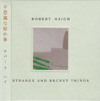 The fantastic final piece in Haigh's trilogy for Daisuke Suzuki's Siren label is now available, and, like the the second in the series, the title is a more than appropriate indication of what Haigh has accomplished with nearly the piano alone. Robert Haigh has already proven his mastery of the melody through his solo albums and multiple aliases but on display for this album is his ability to play, and and I don't mean to merely play the piano, but play with us, the audience. Strange and Secret Things is like 17 very short films, all of which seem to make surprising plot twists early on and finish in unpredictable places.
The fantastic final piece in Haigh's trilogy for Daisuke Suzuki's Siren label is now available, and, like the the second in the series, the title is a more than appropriate indication of what Haigh has accomplished with nearly the piano alone. Robert Haigh has already proven his mastery of the melody through his solo albums and multiple aliases but on display for this album is his ability to play, and and I don't mean to merely play the piano, but play with us, the audience. Strange and Secret Things is like 17 very short films, all of which seem to make surprising plot twists early on and finish in unpredictable places.
After recording for years in Truth Club, Fote, and under the guise of Sema, Robert Haigh removed the layers and removed the aliases and began to release music under his own name. The piano of Valentine Out Of Season (1986) on Steven Stapleton's United Dairies label made such a strong impact for being so simple, firmly establishing Haigh in England's hidden underground as -the- pianist to pay attention to. But only following his second solo album, A Waltz In Plain C (1989), Haigh abandoned the simplicity and followed his inspiration into the world of electronica as The Omni Trio, London Steppers, and Splice. But it is no surprise that each of first two albums continue to be in demand by collectors and new listeners: the music is delicate and simple but the piano pieces are so captivating that those who listen fall in love. Anyone who is "in the know" generally ranks them with high values in their collection.
His return to the use of his birth name corresponded with his return to the piano as the dominant instrument in 2007's From the Air, and Written On Water from 2008 was more focused on "patterns and counterpoint," according to Haigh in an interview with Luke Schleicher. It was this Siren series, however, that has sounded more like a true follow-up to Walz. Notes and Crossings, released 20 years after Waltz In Plain C, was a more pure, more focused selection of songs, however, with Robert removed from most of the decorations and dedicating himself more to the sound of the piano. This album is stripped down even further, with pretty much only the sound of the piano. The sound, the meter, the tone, the feel are all familiar to us fans of the '80s releases. It's those opening tones that continue to grab our attention, but for each piece, he takes the melodies in different directions.
Gone is the sort homage to minimalism, as Haigh creates variations all over the place.The album opens with "Sons of Light (prelude)," a bright, spring-like piece, introducing a melodic theme, repeating it, yet transposing multiple times back and forth between major and minor deviations. Other melodic flip flops spring up from time to time throughout the album's short pieces. These are, at least to me, the "secret things," as described in the title. The practice of switching-up the tune is much like revealing a new secret through each song.
"Revenant (Prelude)," is where Robert begins to introduce variations in tempo and force, making carefully controlled ritardandos on the main theme as it winds down, before repeating. These unexpected twists soon take the form of unpredictable melodic progressions, especially on the odd pieces like "Field Work," "Secret Codes (prelude)," and "Latitude 3," which each seem to surround the more languid, pleasant melodies, such as thegorgeous "Entre Deux (prelude)" and "Clear Water." To me, while the beautiful songs are the ones I think most people will latch on to, it's these odd pieces that leave listeners with more of a feeling of the "strange" part of the title.
Like last year's Anonymous Lights, this album ends with the longest song, and, with a title like "Requiem," Haigh is making it pretty clear that this is a distinct closing point, drawing this trilogy to an end. On "Requiem," Robert makes one last strange and secret surprise. Non-piano instrumentation makes an appearance with this song, for pretty much the first remarkable time on the album. The hushed wind and operatic vocal loop which are incorporated, however, are so subtle up against Robert's already quiet playing, they are bordering on inaudible. This may end what he described as his "piano trilogy," and with his mastery of such a fantastic interplay between the beautiful and strange, I'm quite happy, yet eager for more music this subtle, gorgeous, unpredictable, and tactfully unscarred by overt technology.
samples:
Read More
- Administrator
- Albums and Singles
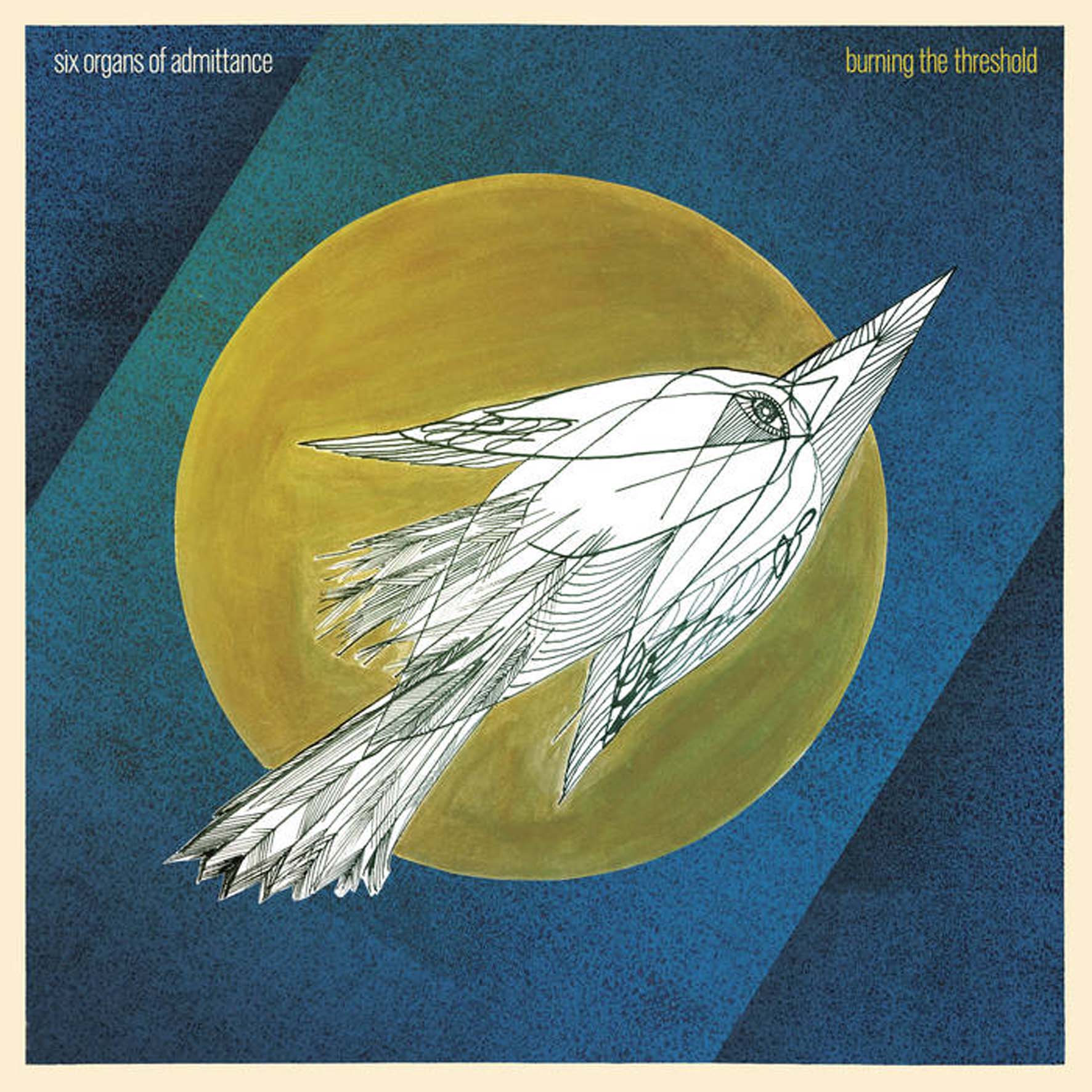
Ben Chasny’s latest release takes a quietly melodic detour from the more challenging fare unleashed by his recent hexadic composing experiments, a gentle path that seems to have been willfully chosen as a modest counterbalance to the pervading darkness of the last year. I have some mixed feelings about that plan, as championing love and forgiveness sounds just fine to me, but Chasny occasionally errs a bit too much on the side of mellow, bucolic '60s/'70s folk rock for my taste. If that side had always been the Six Organs aesthetic, it is doubtful that I ever would have become a fan, as I am most drawn to Chasny's psych side, as well as his unconventional guitar heroics. As a one-off event, however, Burning The Threshold is quite a pleasant and disarming sincere album, offsetting occasional shades of classic Six Organs with a generous supply of surprisingly accessible hooks and melodies (as well as a bevy of talented guests).
The opening "Things as They Are" is a near-perfect statement of intent for the entire album, feeling like a simple, intimate, and pure acoustic guitar piece that could be lazily strummed around a campfire.While its straightforward structure and major chords are not particularly novel on their own, Chasny's virtuosity and cerebral/lysergic eccentricity still creep in to make it an unusual and satisfying piece.I especially enjoyed the lovely central guitar melody, but I was also struck by how the seemingly saccharine chorus of "angels are necessary" expanded into something a bit more poetic and evocative.It is also one of the punchier pieces on the album, maintaining a pleasantly rolling momentum and ending at exactly the right time.While the radiant, beatific sentiments of that opener continue to resonate throughout the rest of the album, Chasny covers a relatively wide swath of stylistic territory and tone over the course of Threshold's nine pieces.In fact, it kind of feels like he is channeling all of his favorite private press obscurities and acid-folk visionaries into a single kaleidoscopic song suite.Not all of those strains are quite for me, sadly, as Chasny has a far greater love of mellow grooves and falsetto choruses than I do.The mantric Damon and Naomi-featuring "Under Fixed Stars" is likable enough, I suppose, but the album’s half-sleepy/half-anthemic single ("Adoration Song") is my least favorite song on the entire album by a landslide.Unexpectedly, however, the instrumental that follows ("Reservoir") is an achingly beautiful masterpiece of tumbling melodies, dual-guitar harmonies, and vibrant cascades of pull-offs.That dichotomy is the essential caveat with Burning The Threshold: I never know which Ben Chasny I am going to get.I like some of them a lot, but certainly not all of them.
Chasny is joined by Ryley Walker on "Around The Axis," which is yet another strong instrumental, resembling a negative image of "Reservoir" that rolls and churns with a dark intensity as layers of melodies and arpeggios beautifully intertwine and harmonize.The following "Taken By Ascent" is another gem, as a bluesy, rhythmic riff erupts into a propulsive groove when Chris Corsano's drums unexpectedly kick in and Chasny stomps his distortion pedal.The underused Corsano also appears in comparatively muted form on the aforementioned "Adoration Song," but "Taken By Ascent" offers an enticing glimpse of a better album that could have been, as the heavy groove and wild fills give the proceedings an extremely welcome and visceral infusion of passion and life.Accordingly, "Ascent" is kind of all-star jam, as Haley Fohr joins in for the choruses and Bitchin’ Bajas' Cooper Crain contributes a very "psych" free-form keyboard solo over the outro."Threshold of Light" is similarly enjoyable, as it is built on a wonderful descending dual-guitar hook and sounds half like an occult invocation and half like a particularly inventive acoustic reworking of an Iron Maiden song.Chasny and his collaborators hit the mark yet again with the bright and lively instrumental "St. Eustace," which unexpectedly breaks into a middle section of prog-like intricacy and complexity.At his best, Chasny is truly in a class by himself, unleashing wonderfully melodic hooks embellished by a host of flourishes and layers of great harmonies and countermelodies.I wish he harnessed that firepower more often on this album, but he has still a fairly impressive hit-to-miss rate and no one else can do what he does at all.Also, the final piece ("Reflection") shows that his more understated and languorous side cannot be completely dismissed, as Chasny sheds all of his collaborators and manages to hit the perfect balance of space, motion, melody, and looseness all by himself.
While I am not particularly fond of a couple songs, my only significant critique of Burning The Threshold is that Chasny makes some seemingly self-sabotaging decisions and tonal shifts that I find quite perplexing.On pieces like "Reservoir," I feel like Six Organs of Admittance is one of the greatest and most underappreciated bands in the American underground, yet the "rise up now" chorus of "Adoration Song" is my least favorite passage on the entire album and that was chosen as the lead single.Admittedly, me liking something is certainly a commercial kiss of death, but Chasny is not a traditional pop or rock artist, so I think my instincts are sound here.It is rare for me to encounter an artist where I truly have no idea where they are creatively coming from or what motivates them, yet Chasny is exactly such a fellow.I am sure it probably just rooted in something like a deep teenage love for The Grateful Dead or something.Regardless, Six Organs is a project that leaves me in a state of permanent uncertainty about what Chasny will do next and whether or not I will like it.On some level, I suppose that is great, as I keep buying Six Organs of Admittance albums and never find myself thinking "Ok, I get what this guy is going for–I don't need to hear any more."The downside, of course, is that I find Chasny's oeuvre and this album uneven at times, but I would much rather an artist take chances and evolve than languish in stasis.Ben Chasny is no languisher and Burning The Threshold is mostly a very good album that compensates for its occasional missteps with somewhat more frequent flashes of brilliance.
 
Read More
- Administrator
- Albums and Singles
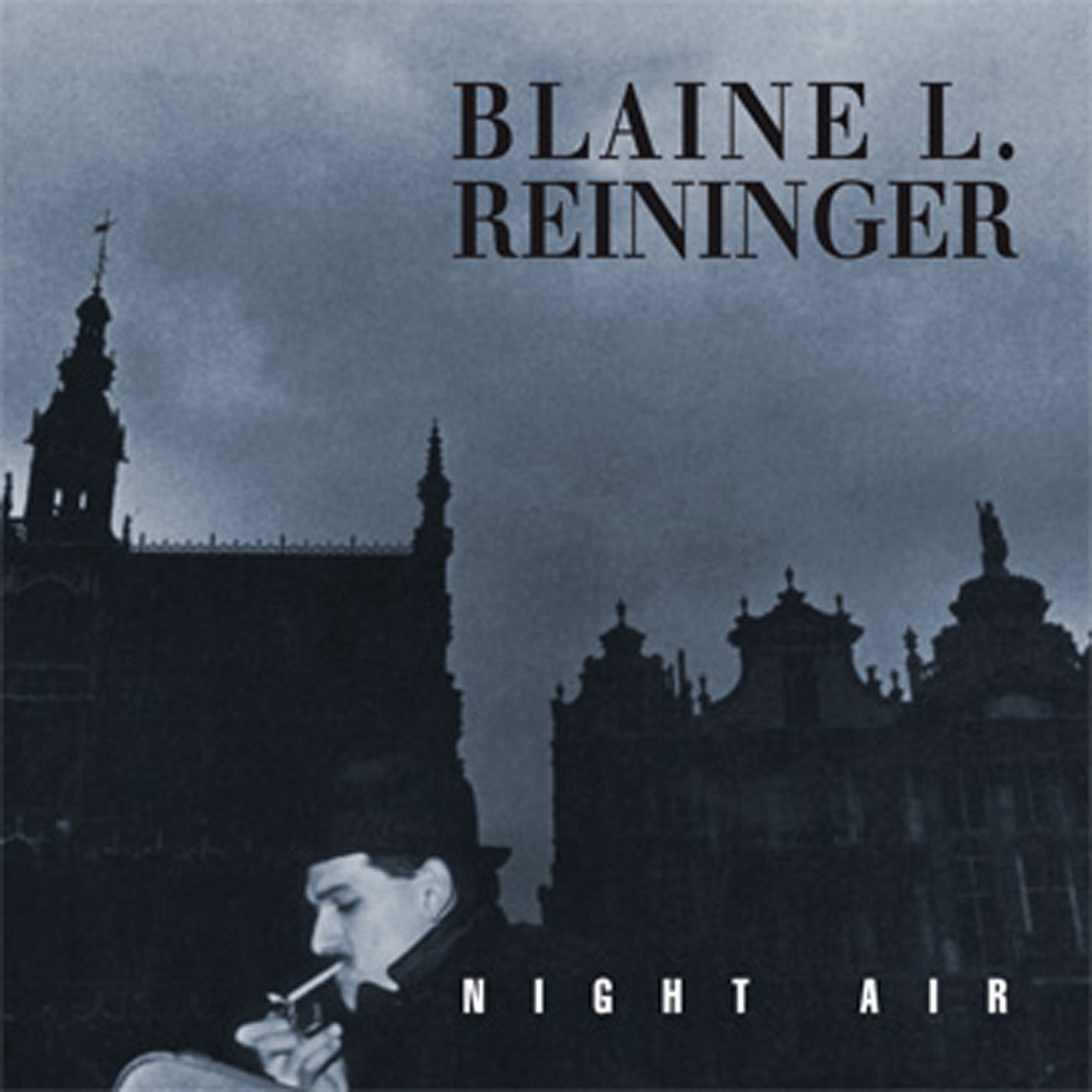 Newly reissued in a much-expanded edition, Night Air was recorded in 1983, not long after Reininger left Tuxedomoon to try his hand at a solo career as an expat in Belgium. Described by Les Disques du Crepuscule as a classic (which it may very well be in some circles), Night Air is certainly a curiously moody and idiosyncratic bit of art-damaged pop music that is very much of its time: Reininger borrowed a bit of the gloom from post-punk and a bit of the larger-than-life pomp from big glossy pop to carve out his own strange niche of cosmopolitan, theatrical pop and noirish atmospheres. Night Air feels like Reininger attempted to forcibly distill late-night existential crises, hip European art scenes, and chain-smoking in coffee shops into something resembling a macabre, brooding, and vampiric Duran Duran. As such, a lot of Night Air’s appeal is of the nostalgic variety, but it is unquestionably a unique release and there are quite a few intriguing gems and rarities included in the extras. In fact, the bonus material is frequently better than the actual album.
Newly reissued in a much-expanded edition, Night Air was recorded in 1983, not long after Reininger left Tuxedomoon to try his hand at a solo career as an expat in Belgium. Described by Les Disques du Crepuscule as a classic (which it may very well be in some circles), Night Air is certainly a curiously moody and idiosyncratic bit of art-damaged pop music that is very much of its time: Reininger borrowed a bit of the gloom from post-punk and a bit of the larger-than-life pomp from big glossy pop to carve out his own strange niche of cosmopolitan, theatrical pop and noirish atmospheres. Night Air feels like Reininger attempted to forcibly distill late-night existential crises, hip European art scenes, and chain-smoking in coffee shops into something resembling a macabre, brooding, and vampiric Duran Duran. As such, a lot of Night Air’s appeal is of the nostalgic variety, but it is unquestionably a unique release and there are quite a few intriguing gems and rarities included in the extras. In fact, the bonus material is frequently better than the actual album.
Lamentably, I have not heard the entirety of Reininger’s 1982 debut album (Broken Fingers) that he recorded while he was still a member of Tuxedomoon, but based upon the live songs included on Night Air's second disc (Live in Bologna), that period seems like it may have been his period of maximum deranged, free-wheeling creativity.The handful of Broken Fingers' pieces performed in Bologna sound either downright psychotic or gleefully ridiculous, like was he venting absolutely all of his impulses that were too outré for Tuxedomoon (though such a thing is admittedly difficult to imagine).On the harrowing "Spiny Doughboys," for example, he sounds downright Scott Walker-esque, while "Volo Vivace" is a dark and driving synthpop groove embellished with a wonderful Eastern European-sounding violin solo (though Reininger puckishly undercuts its seriousness by unexpectedly tossing off a verse from The Trashmen’s "Surfin' Bird").Elsewhere on the live disc, he unleashes an ode to "greasy gigolos" in Spanish that sounds like a mariachi piece bizarrely adapted for fretless bass and violin, as well as a legitimately menacing and unhinged homage to NYC entitled "Uptown" (though it too is partially undercut, this time by an introductory rant about graffiti done with a hammy NYC accent).Curiously, nothing like any of those songs appears on the formal Night Air album, which seems to instead take its template from Broken Fingers' title piece, which kind of sounds like a moodier, slowed-down ABC with violins.On one hand, I can understand that direction completely: "Broken Fingers" sounds like a smarter, more downcast version of the era's radio-friendly pop, so it was logical for Reininger to believe he could potentially launch a viable solo career with an entire album in that vein.Unfortunately, he also sanded away all of his playful and experimental edges in favor of relatively conventional "pop" structures and an excess of dramatic intensity.
The best pieces on Night Air are the few where Reininger and his collaborators employ a bit of a lighter touch, such as the lurching and tenderly wistful "Ash and Bone" or suavely burbling internationalist pop of "A Café Au Lait For Mr Xyzptlk."More frequently, however, Reininger lays on the intensity and urgency with a trowel, describing his fellow subway passengers in "Mystery and Confusion" (the album's single) at a dramatic pitch that his contemporaries tended to reserve for songs about Bloody Sunday or the plight of Aborigines.Elsewhere, "Birthday Song" is pure gloom-shrouded misanthropy, as Reininger looks out his window to recoil at the "half-witted morons" who "shuffle along," "get uglier every day," and "do not celebrate your birthday."That said, Tuxedomoon’s Steven Brown contributes some smokin’ saxophone near the end, so it gets a bit livelier as it progresses.The title piece maintains a similarly urgent tone, but fares a bit better, as it is bolstered by Alain Goutier's fat, ribcage-rattling bass throbs and a fine Middle Eastern-sounding violin melody.It kind of sounds like a Paul Bowles novel transposed into the Brussels night.There are also some curious oddities lurking among Night Air's original ten songs, ranging from the woozily carnivalesque "Intermission" to a cheerfully burbling pop song about "beak people" ripping each other apart.Most of the stronger pieces, however, lurk among the bonus tracks culled from various singles.I especially liked tender and comparatively understated "Bizarre Bizarre," which was previously relegated to the B-side of the "Mystery and Confusion" single and thus doomed to eternal obscurity until now.There are also some fine instrumental collaborations culled from elsewhere, especially Reininger’s work with Durutti Column on a Richard Jobson piece and a version of Tuxedomoon’s "Crash" remixed by The Residents.
While I tend to loathe live albums, I have to make an exception here. as the second disc is probably where Reininger shines the brightest.In fact, the Live in Bologna disc unwittingly helps illustrate what an ephemeral and quixotic period in Reininger’s career Night Air captures, as 1982’s Broken Fingers seems considerably more playfully anarchic and eclectic, while the concert from 1984 shows Reininger to be a multilingual, violin-shredding raconteur who shifts guises and tones from one song to the next (evil Lou Reed, lonely cowboy, boisterous street musician, etc.).That Bologna Reininger feels like the real Reininger, whereas Night Air feels very much like a square peg deciding to get serious and force itself into a round hole.Also, a lot of the Night Air songs performed at the Bologna show seem to have improved considerably from the studio versions, as they are more prone to erupt into wild violin solos and the live arrangements tend to replace the omnipresent fretless bass with fresh new synth motifs.And even though it highlights some of his more dubious decisions as a lyricist, "Magnetic Life" shows that Reininger seems much more comfortable riding a funky electro groove than he does lurking in goth-tinged gloom.Much like a lot of pieces in this collection, however, that stab at art-damaged funk is just an intriguing glimpse at one of the many promising directions that Reininger’s solo career might have gone if he had explored them further and not returned to Tuxedomoon.I quite like a number of them, even if they all seem like radically different artists (Reininger as Talking Heads, Reininger as Suicide, Reininger as avant-garde violinist).Not many of those facets made it onto the comparatively monochromatic original album though, making this expanded reissue an inspired redressing of a past mistake: Blaine L. Reininger was unquestionably both an intriguing fellow and a restlessly creative artist eager to take surprising risks with his solo career in the early '80s, but the original Night Air did not quite capture that vibrancy and passion.This latest incarnation goes a long way towards illuminating that previously obscured vitality.
 
 
Read More
- Administrator
- Albums and Singles
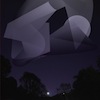 After a major wind-down in their release rate as Emeralds (and a collection of busy solo careers), a new full-length album out of the blue was a bit of a shock but a very welcome one. Never ones to continue to re-tread old ground, Just to Feel Anything continues from where I last encountered them: an exciting live performance over a year ago where they had left most traces of their significant recording career behind.
After a major wind-down in their release rate as Emeralds (and a collection of busy solo careers), a new full-length album out of the blue was a bit of a shock but a very welcome one. Never ones to continue to re-tread old ground, Just to Feel Anything continues from where I last encountered them: an exciting live performance over a year ago where they had left most traces of their significant recording career behind.
"Before Your Eyes" has all the trappings of the '80s nostalgia fests that seem to pop up amongst hipsters with alarming regularity but has a major difference: it actually carries some serious weight. A chunky bass line drives the piece as spectral synths create a neon haze around it. This is the sort of stuff that the first generation of Krautrockers attempted to do but never managed to pull off. Kraftwerk, the only ones who fully embraced the melodic and rhythmic capabilities of synthesisers in a way that has not become dated, are channelled in the chunky beats and intricate harmonic patterns of "Adrenochrome." However, Emeralds move beyond imitation through their deft use of layering to create a living cosmos in place of Kraftwerk’s simple, clockwork arrangements. Add some solar flares in the form of Mark McGuire’s guitar lines and this becomes some truly phenomenal stuff.
The three of them let rip on "Everything is Inverted," a storming piece of crystalline perfection. Here the main differences in aesthetic between old Emeralds and where they are now are amplified as they move from slurred, droning works which, although beautiful, felt nihilistic towards a futuristic, sharp and defined sound which screams with absolute ecstasy. Even when they slow down the proceedings with pieces like "Through and Through" and "The Loser Keeps America Clean," the mood is more along the lines of Luc Ferrari’s joyous experimentation with sound than Throbbing Gristle’s grimy assaults on the senses.
Just to Feel Anything closes with the tremendous and delicate "Search for Me in the Wasteland," where McGuire forms blankets of guitars (electric and acoustic) between which Steve Hauschildt and John Elliott weave threads of gossamer thin hums and drifting euphonic tones. Listening to this piece in particular, I feel the same thrill as I did the first time I listened to Solar Bridge or Does It Look Like I’m Here? as Emeralds capture the magic once again. Just to Feel Anything succeeds in not only transforming what it is Emeralds does but also in completely winning my affection all over again (even though it never waned).
 
Read More
- Administrator
- Albums and Singles
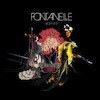 I do not know what I find more surprising, the fact that there is a new Fontanelle album at all or that it has been released by Southern Lord (who have been largely at sea barring the occasional good release these last few years). What does not surprise me is how good Vitamin F is. Had this come out ten years ago, it would have made total sense but the large interval between this and Fontanelle’s previous releases has not diminished this album’s impact. This is superb, essential, and every other word that I need to use in order to get people to listen NOW.
I do not know what I find more surprising, the fact that there is a new Fontanelle album at all or that it has been released by Southern Lord (who have been largely at sea barring the occasional good release these last few years). What does not surprise me is how good Vitamin F is. Had this come out ten years ago, it would have made total sense but the large interval between this and Fontanelle’s previous releases has not diminished this album’s impact. This is superb, essential, and every other word that I need to use in order to get people to listen NOW.
Melding Miles Davis circa Bitches Brew and Sun Ra’s best keyboard explorations, Vitamin F sounds utterly timeless as the group pull sounds from the ether like jazz wizards. "Watermelon Hands" slips in and out of a cool groove and a tight release of pressure via a terrific saxophone solo which seems to come out of the same head-splitting space as Bill Pullman’s sax solo during David Lynch’s Lost Highway. Five minutes in and this is shaping up to be one serious trip.
"The Adjacent Possible" swaggers around like it owns the place (and for its duration, it does). Part King Crimson, part Stevie Wonder, the rhythm section play a brooding, bruiser of a backing as electric piano, guitar and synthesiser strut out of the speakers like prized fighters spoiling for a victory. Elsewhere, Fontanelle sound like they are going to out-Sabbath Black Sabbath on "Traumaturge," creating a heaving monster of a track before unleashing a killer melody almost out of nowhere. Nearly 25 minutes in and I am in need of a stiff drink to calm my nerves.
The last half of Vitamin F keeps up this level of sheer brilliance as the music goes up another level. "Ataxia," despite its name, shows the group exerting perfect control over their playing. As it flows along with a jaunty lilt to it, the brass and guitars explode out of the speakers with a joyous energy. While they nod to hard bop and modal jazz, Fontanelle sound like they are forging an alternative route from these styles that went unexplored during the free jazz explosion of the ‘60s. This leads into the anti-gravitational push of "Reassimilated" which calms things down considerably to finish off the album; a much needed come down after the highs of the previous six pieces. By the time Fontanelle bring things to a gentle halt, I am ready to hit play on Vitamin F again and get lost for another while.
 
Read More
- Administrator
- Albums and Singles

JOHN WIESE 'Seven of Wands' (PAN 22)
As a composer, John Wiese is an elusive one. Employing a very healthy range of conceptual framework throughout his oevure, he's unmistakably recognizable, but rarely easy to predict. No matter what the sound, we find it always sounds like Wiese. Seven Of Wands contains a romanticism only hinted at previously. Comprised of pieces from a range of eras and sequenced into a narrative arc, this very unique album has a quality of being beautiful, listenable, immersive, and transportive all at once. He probably wouldn't like this, but I dare say "musical."
Let's look for a second at the development of Wiese's solo albums to date: Magical Crystal Blah (2003), Soft Punk (2002–2005), Dramatic Accessories (2007), Circle Snare (2008), Zombie (2009), and now Seven Of Wands (2004–2010). With the exception of Zombie's rigid conceptualism, what we can see is a development of a completely individual approach to cutting and stereo spectrum, with a constantly fluctuating degree of severity in choice of sounds. On this latest, we see this transposed to a longer-form, with more emphasis on beauty and musical qualities (well, don't get me wrong), employing strategies and techniques of musique concrète and electroacoustic music throughout, all the while further emphasizing the mixing desk as a true instrument.
Two of the albums central pieces were developed while touring the US, UK and Europe with Liars, No Age, and (in quadraphonic) Matmos, and feature source material contributed by Angus Andrew (voice, field recording) and Julian Gross (percussion) of Liars. This is Wiese's second release on PAN, following the vinyl edition of C-Section, his duo album with Evan Parker.
The CD is a limited edition of 1000 copies, and is packaged in a pro-press digisleeve jacket which itself is housed in a one-tone silk screened pvc sleeve with artwork by John Wiese and Bill Kouligas.
More information is available at the PAN website.
Read More
- Administrator
- Albums and Singles

ELI KESZLER 'Cold Pin' (PAN 21)
Over two years in the making, Cold Pin is the new full length record by Eli Keszler. Both a composition and stand alone installation, 14 strings ranging in length from 25 to 3 feet are strung across a 15 x 40 curved wall, with motors attacking the strings, connected by micro-controllers, pick-ups and rca cables. Recorded in Boston's historic Cyclorama, a massive dome built to house the Cyclorama of the Battle of Gettysburg painting in 1884. The b side features in addition, a 'dry' version of the installation with motor attacks on metal squares rather then strings, creating dense percussive clusters. Cold Pin works within the frame work of left to right time and vertical structure. The installation acts as the architecture of the music, surrounding and immersing the live instruments into incredible density and sharp angular mass shapes, and functions alone as the performers stops. Rather then an individual sound the sustained horns, strings, drums and metallic attacks function as a singular unit, and continue too when they stop alongside the installation. Cold Pin features Eli Keszler (drums, crotales installation and guitar), Geoff Mullen (guitar), Ashley Paul (clarinet, guitar, greenbox) Greg Kelley (trumpet), Reuben Son (bassoon) and Benjamin Nelson (cello).
Eli Keszler is a composer, artist and multi-instrumentalist based in New York City. In performance, he often plays drums, bowed crotales and guitar in conjunction with his installations. In his ensemble compositions, he uses extended strings, motors, crotales, horns and mechanical devices to create his sound, balancing intense harmonic formations with acoustic sustain, fast jarring rhythm, mechanical propulsion, dense textures and detailed visual presentations. Eli has toured extensively throughout Europe and the US, performing solo and in collaboration with artists such as Phill Niblock, Aki Onda, Joe Mcphee, Loren Connors, Jandek, Roscoe Mitchell, Anthony Coleman, Joe Morris, Steve Beresford, C Spencer Yeh, Greg Kelley (Nmperign), T Model Ford, Ran Blake, Ashley Paul and Steve Pyne. He has recorded solo releases for labels such as hiw own REL Records, ESP-DISK' and Type (Red Horse). His installations have appeared at the Boston Center for the Arts and Nuit Blanche NYC and the Shreveport MSPC New Music Festival. He has most recently won the Mata composers competition for the 2012 season. Eli Keszler is a graduate of the New England Conservatory in Boston where he studied with Anthony Coleman and Ran Blake.
The Lp is mastered and cut by Rashad Becker at D&M, in a limited edition of 500 copies, pressed on 140g vinyl and comes in a poly-lined inner sleeve. It is packaged in a pro-press color jacket which itself is housed in a silk screened pvc sleeve with artwork by Kathryn Politis & Bill Kouligas.
More information available at the PAN website.
Read More
- Administrator
- Albums and Singles
 Tino Corp has releasedthis special 12" EP to celebrate the 10th anniversary of the release ofone of the most important techno releases of the 90s. But why???Truthfully there's really only a couple decent mixes on this record,but none of them are varied even remotely enough as the originalrelease. This doesn't make up for the original House of God (HolophonicSound EP) which was stolen from me, which I can no longer replace. Outof the four mixes, the DHS mix might be my favorite, newer samples giveit a more modern feel, but in all honesty, to me it's rather lukewarmcompared to the trancey, hypnotic original. At first, I'm tempted toguess that the tracklisting on side 2 is incorrect as track 1 soundsmore like a MBM remix with some of the various sounds. However, withfurther listening, those samples used sure seem to yank a ton from MBMback catalogue. Could this be a form of hero worship? MBM'sconrtibution probes more of the deep trancey sounds, without jumpinginto MBM-esque breakbeat we're more familiar with hearing. Well, thanksfor teasing us with this release, but the original EP should truly bemade available again.
Tino Corp has releasedthis special 12" EP to celebrate the 10th anniversary of the release ofone of the most important techno releases of the 90s. But why???Truthfully there's really only a couple decent mixes on this record,but none of them are varied even remotely enough as the originalrelease. This doesn't make up for the original House of God (HolophonicSound EP) which was stolen from me, which I can no longer replace. Outof the four mixes, the DHS mix might be my favorite, newer samples giveit a more modern feel, but in all honesty, to me it's rather lukewarmcompared to the trancey, hypnotic original. At first, I'm tempted toguess that the tracklisting on side 2 is incorrect as track 1 soundsmore like a MBM remix with some of the various sounds. However, withfurther listening, those samples used sure seem to yank a ton from MBMback catalogue. Could this be a form of hero worship? MBM'sconrtibution probes more of the deep trancey sounds, without jumpinginto MBM-esque breakbeat we're more familiar with hearing. Well, thanksfor teasing us with this release, but the original EP should truly bemade available again.samples:
Read More
- Administrator
- Albums and Singles
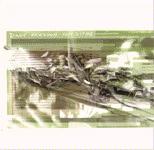 German Bernd Friedmannspent all of the 1990's recording and performing electronic music inmany styles under many names, including: Some More Crime, Drome,Nonplace Urban Field, Burnt Friedman & The Nu Dub Players andFlanger. The aptly titled "Con Ritmo" ("With Rhythm") is the solo debutunder his slyly altered given name and is allegedly performed live byThe Disposable Rhythm Section as detailed by the tongue in cheekinsert. Friedmann's playful sense of humor extends well beyond namesand liner notes though ... his music is a mysterious mix of genreblurring sound from unknown sources. Jazz is essentially the languagebut it's spoken in soothing and spacious ambient, electronic, latin,dub and fusion tongues. Latino rhythms and busy bass lines drive thetracks with flourishes of percussive fills, an abundance of prettyvibes and keys, meandering electric guitar notes and pluckings, somehorns and the slightest traces of electronic tinkering. You're neverquite sure what is 'played' and what is sampled, what's electronic andwhat's 'real'. Does it matter? No, it doesn't. The sound and feel issincere and evocative. Some notes on a couple oddities: "Platin Tundra"is a gorgeous dub-jazz journey with a beautiful deep bass swell midwaythrough and the 11+ minute "Das Wesen aus der Milchstrasse" ("TheNature of the Milky Way") features Friedmann's Flanger partner AtomHeart on an extensive Moog solo over electro-bass blips and latin polyrhythms. Fun stuff start to finish! Now to get everything else byFriedmann. A new much delayed album possibly titled "Long Fucking Time"is due out early 2001 on his Nonplace label.
German Bernd Friedmannspent all of the 1990's recording and performing electronic music inmany styles under many names, including: Some More Crime, Drome,Nonplace Urban Field, Burnt Friedman & The Nu Dub Players andFlanger. The aptly titled "Con Ritmo" ("With Rhythm") is the solo debutunder his slyly altered given name and is allegedly performed live byThe Disposable Rhythm Section as detailed by the tongue in cheekinsert. Friedmann's playful sense of humor extends well beyond namesand liner notes though ... his music is a mysterious mix of genreblurring sound from unknown sources. Jazz is essentially the languagebut it's spoken in soothing and spacious ambient, electronic, latin,dub and fusion tongues. Latino rhythms and busy bass lines drive thetracks with flourishes of percussive fills, an abundance of prettyvibes and keys, meandering electric guitar notes and pluckings, somehorns and the slightest traces of electronic tinkering. You're neverquite sure what is 'played' and what is sampled, what's electronic andwhat's 'real'. Does it matter? No, it doesn't. The sound and feel issincere and evocative. Some notes on a couple oddities: "Platin Tundra"is a gorgeous dub-jazz journey with a beautiful deep bass swell midwaythrough and the 11+ minute "Das Wesen aus der Milchstrasse" ("TheNature of the Milky Way") features Friedmann's Flanger partner AtomHeart on an extensive Moog solo over electro-bass blips and latin polyrhythms. Fun stuff start to finish! Now to get everything else byFriedmann. A new much delayed album possibly titled "Long Fucking Time"is due out early 2001 on his Nonplace label.samples:
Read More
- Administrator
- Albums and Singles
 This was originallyreleased as two separate EPs: "Lassie House" being a 10" limited to 250copies through Slaalplaat in 1995; and "Jumble Massive" being an LPlimited to 296 copies through Soleilmoon in 1996. Now, though, they aretogether and released, unlimited, through Cacciocavallo. The materialseems to fit together on one release nicely, with no major differenceinsound between the two EPs. "Lassie House," to some degree, has a moreslapstick humor feel to it, though both conjure rememberence of 18's UKgameshows and sitcoms, as well as children's programs and circus tunes.Vicki Bennett is very clever with how she collages her clips andsamples together, but I feel perhaps that this work centers less onbeing "humourous," per sae, and more and merely being nonsensical. Thetracksare, as one EP's title suggests, a massive jumble of cut up, repeated,morphed, and fucked sound clips from god-knows-where. A favouritehightlight is the last track, which acts as a mock self-help tape,helping "people like us" to cope with such things as sewing machinesand anticipating bowel movements: you need only chant, "Come on, poo!Come on, poo! Poooo, coming! Poooo, coming!" These EPs were nicelyworked fortheir time, but, to be honest, Vicki has since outdone herself withreleases such as the Hate People Like Us remix album and herbrilliant new (but not newest!) release, Thermos Explorer.
This was originallyreleased as two separate EPs: "Lassie House" being a 10" limited to 250copies through Slaalplaat in 1995; and "Jumble Massive" being an LPlimited to 296 copies through Soleilmoon in 1996. Now, though, they aretogether and released, unlimited, through Cacciocavallo. The materialseems to fit together on one release nicely, with no major differenceinsound between the two EPs. "Lassie House," to some degree, has a moreslapstick humor feel to it, though both conjure rememberence of 18's UKgameshows and sitcoms, as well as children's programs and circus tunes.Vicki Bennett is very clever with how she collages her clips andsamples together, but I feel perhaps that this work centers less onbeing "humourous," per sae, and more and merely being nonsensical. Thetracksare, as one EP's title suggests, a massive jumble of cut up, repeated,morphed, and fucked sound clips from god-knows-where. A favouritehightlight is the last track, which acts as a mock self-help tape,helping "people like us" to cope with such things as sewing machinesand anticipating bowel movements: you need only chant, "Come on, poo!Come on, poo! Poooo, coming! Poooo, coming!" These EPs were nicelyworked fortheir time, but, to be honest, Vicki has since outdone herself withreleases such as the Hate People Like Us remix album and herbrilliant new (but not newest!) release, Thermos Explorer.samples:
Read More
- Administrator
- Albums and Singles
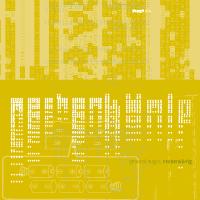 After a four-year hiatus,Mego favorites General Magic return with Rechenkoenig, a brilliantfollow-up to their debut album, Frantz. Ramon Bauer and Andreas Pieper,who comprise General Magic, have a reputation of steering clear of theconventions to which minimal electronic music is often prone. Thetracks on Rechenkoenig are brief in length, and juxtaposed with suchsonic abruptness that the listener is kept constantly on edge, withoutpossibility of repetition-induced boredom. In fact, 'minimal' isprobably the adjective furthest from my mind upon hearing the fragmentsof frantically paced beats, often heavily distorted, scattered amongstdigital twittering, crackling, and outright onslaughts of noise.
After a four-year hiatus,Mego favorites General Magic return with Rechenkoenig, a brilliantfollow-up to their debut album, Frantz. Ramon Bauer and Andreas Pieper,who comprise General Magic, have a reputation of steering clear of theconventions to which minimal electronic music is often prone. Thetracks on Rechenkoenig are brief in length, and juxtaposed with suchsonic abruptness that the listener is kept constantly on edge, withoutpossibility of repetition-induced boredom. In fact, 'minimal' isprobably the adjective furthest from my mind upon hearing the fragmentsof frantically paced beats, often heavily distorted, scattered amongstdigital twittering, crackling, and outright onslaughts of noise.samples:
Read More


